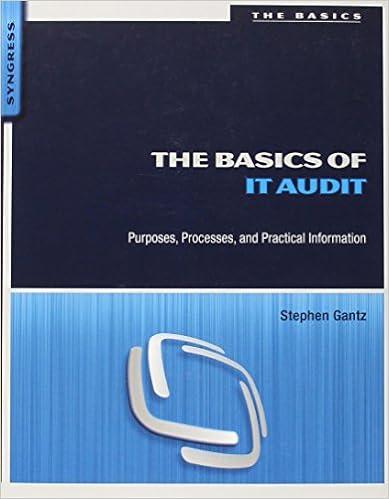
Note: In this chapter and in all succeeding work throughout the course, unless instructed otherwise, calculate hourly rates and overtime rates as follows: 1. Carry the hourly rate and the overtime rate to 3 decimal places and then round off to 2 decimal places (round the hourly rate to 2 decimal places before multiplying by one and one-half to determine the overtime rate). 2. If the third decimal place is 5 or more, round to the next higher cent. 3. If the third decimal place is less than 5, simply drop the third decimal place. Examples: Monthly rate $1,827 Weekly rate ($1,827 x 12)/52 - 5421.615 rounded to $421.62 Hourly rate $421.62/40 = $10.540 rounded to $10.54 O.T. rate $10.54 x 1.5 - $15.81 Also, use the minimum hourly wage of $7.25 in solving these problems and all that follow. Blue-Collar Workers The exemption from overtime pay based on the duties and salary tests does not apply to blue- collar workers (manual workers). No matter how highly paid, these workers are still entitled to overtime pay. This also applies to police officers, firefighters, paramedics, emergency medical technicians, and licensed practical nurses. Equal Pay Act The Equal Pay Act amended the FLSA to require that men and women performing equal work must receive equal pay. The Equal Pay Act applies to any employer having workers subject to the minimum pay provisions of the Wage and Hour Law. The equal-pay requirements also apply to white-collar workers and outside salespersons, even though they are exempt from the minimum wage standards. The Equal Pay Law prohibits an employer from discriminating by paying wages to employees of one sex at a lower rate than those paid the opposite sex for equal work on jobs that require equal skill, effort, and responsibility and that are performed under similar working conditions. However, wage differentials between sexes are allowable if based on a seniority system, a merit system, a payment plan that measures earnings by quantity or quality of production, or any factor other than sex. If an unlawful pay differential between men and women exists, the employer must raise the lower rate to equal the higher rate. Child-Labor Restrictions The FLSA prohibits a business from the interstate shipment of its goods or services if it employs child labor unlawfully. Under the FLSA, the secretary of labor issues regulations that restrict the employment of individuals under the age of 18. The restrictions divide child employment into nonfarm occupations and agricultural occupations. Connie Duffy started working for Dexter Company on Thursday of this week. She worked 10 hours on Thursday and 8 hours on Friday. Her annual salary is $80,600, and she is an exempt white-collar employee. Determine her gross pay for her first partial week of work. Gross pay $ Note: In this chapter and in all succeeding work throughout the course, unless instructed otherwise, calculate hourly rates and overtime rates as follows: 1. Carry the hourly rate and the overtime rate to 3 decimal places and then round off to 2 decimal places (round the hourly rate to 2 decimal places before multiplying by one and one-half to determine the overtime rate). 2. If the third decimal place is 5 or more, round to the next higher cent. 3. If the third decimal place is less than 5, simply drop the third decimal place. Examples: Monthly rate $1,827 Weekly rate ($1,827 x 12)/52 - 5421.615 rounded to $421.62 Hourly rate $421.62/40 = $10.540 rounded to $10.54 O.T. rate $10.54 x 1.5 - $15.81 Also, use the minimum hourly wage of $7.25 in solving these problems and all that follow. Blue-Collar Workers The exemption from overtime pay based on the duties and salary tests does not apply to blue- collar workers (manual workers). No matter how highly paid, these workers are still entitled to overtime pay. This also applies to police officers, firefighters, paramedics, emergency medical technicians, and licensed practical nurses. Equal Pay Act The Equal Pay Act amended the FLSA to require that men and women performing equal work must receive equal pay. The Equal Pay Act applies to any employer having workers subject to the minimum pay provisions of the Wage and Hour Law. The equal-pay requirements also apply to white-collar workers and outside salespersons, even though they are exempt from the minimum wage standards. The Equal Pay Law prohibits an employer from discriminating by paying wages to employees of one sex at a lower rate than those paid the opposite sex for equal work on jobs that require equal skill, effort, and responsibility and that are performed under similar working conditions. However, wage differentials between sexes are allowable if based on a seniority system, a merit system, a payment plan that measures earnings by quantity or quality of production, or any factor other than sex. If an unlawful pay differential between men and women exists, the employer must raise the lower rate to equal the higher rate. Child-Labor Restrictions The FLSA prohibits a business from the interstate shipment of its goods or services if it employs child labor unlawfully. Under the FLSA, the secretary of labor issues regulations that restrict the employment of individuals under the age of 18. The restrictions divide child employment into nonfarm occupations and agricultural occupations. Connie Duffy started working for Dexter Company on Thursday of this week. She worked 10 hours on Thursday and 8 hours on Friday. Her annual salary is $80,600, and she is an exempt white-collar employee. Determine her gross pay for her first partial week of work. Gross pay $







